#coronavirus relief efforts
Explore tagged Tumblr posts
Text

A revolutionary “pessimistic” postscript in times of coronavirus
“The outbreak of the new strain of coronavirus (COVID-19), which has wrought havoc in China since the end of last year, has surged over borders and impacted the rest of the world, and with it, the imminent economic crisis has but further advanced. The world economy is in full-on crisis, the administrators of power are pending on immense financial relief, the bourgeoisie are beginning to close factories and lay off employees using the lucky pretext of the “quarantine” as excuse. The disaster is immanent. Nevertheless, it’s important to know that the monetary losses don’t signify the fall of the capitalist system. Capitalism will seek at every moment to restructure itself on the basis of austerity measures imposed on proletarians in order to palliate all the catastrophic consequences that it will bring along with it. And this is due to the fact that the “blows” that capitalism has been dealt due to these phenomena are simply losses in its rate of profit, but those losses don’t at all change its structure or its essence, meaning the social relations that allow it to remain standing: the commodity, value, the market, exploitation and wage labor. In fact, it’s in these structures that capitalism most reaffirms its necessities: sacrificing millions of human beings to the favor of economic interests, making the polarization between classes sharpen and revealing more forcefully in what position the dominant class is to be found, who will use all the efforts in their reach in order to preserve this state of things.
[…]
The ever-more contradictions heightened contradictions of this mode of production (crisis, war, pandemics, environmental destruction, pauperization, militarization), which exasperate our conditions of survival, won’t clear the way either mechanically or messianically for the end of capitalism. Or better said, such conditions, although they will be fundamental, won’t suffice. Because for capitalism to reach its end, it’s imperative for there to be a social force, antagonistic and revolutionary that manages to direct the destructive and subversive character towards something completely different from what we know and experience now.
If we want it or not, we can’t let a question as important as the revolution to drift aimlessly, to leave it to luck. It’s necessary to experience the resolution of this problem on the basis of the organization of tasks that can go on to present themselves, that’s to say, the grouping for the appropriation and defense of the most immediate necessities (not paying debts, rent, or taxes), but also, the rupture from all the dreams and mirages that carry us to manage the save miseries behind another facade.
[…]
It’s not necessary to wait for the dystopia or the hollywoodesque scenes of apocalypse, because these are already materially manifesting in different parts of the globe, and in fact they greatly surpass any attempt at representation by cinematic fiction.
The current pandemic of COVID-19 is one more stage in the degradation to which this society of commodity production brings us.
A stage before which it is reaffirmed that the true future only hangs from two strings:
Communist revolution or to perish in the twilight!”
Contra la Contra n.3 Collapse of the capitalist system? A few notes on current events. Mexico City March 2020
#freedom#ecology#climate crisis#anarchism#resistance#community building#practical anarchy#practical anarchism#anarchist society#practical#revolution#daily posts#communism#anti capitalist#anti capitalism#late stage capitalism#organization#grassroots#grass roots#anarchists#libraries#leftism#social issues#economy#economics#climate change#climate#anarchy works#environmentalism#environment
17 notes
·
View notes
Text
The federal government has burned through more than $1 billion to study long Covid, an effort to help the millions of Americans who experience brain fog, fatigue, and other symptoms after recovering from a coronavirus infection.
There’s basically nothing to show for it.
The National Institutes of Health hasn’t signed up a single patient to test any potential treatments — despite a clear mandate from Congress to study them. And the few trials it is planning have already drawn a firestorm of criticism, especially one intervention that experts and advocates say may actually make some patients’ long Covid symptoms worse.
Instead, the NIH spent the majority of its money on broader, observational research that won’t directly bring relief to patients. But it still hasn’t published any findings from the patients who joined that study, almost two years after it started.
There’s no sense of urgency to do more or to speed things up, either. The agency isn’t asking Congress for any more funding for long Covid research, and STAT and MuckRock obtained documents showing the NIH refuses to use its own money to change course.
“So far, I don’t think we’ve gotten anything for a billion dollars,” said Ezekiel Emanuel, a physician, vice provost for global initiatives, and co-director of the Healthcare Transformation Institute at the University of Pennsylvania. “That is just unacceptable, and it’s a serious dysfunction.”
Eric Topol, the founder and director of the Scripps Research Translational Institute, said he expected the NIH would have launched many large-scale trials by now, and that testing treatments should have been an urgent priority when Congress first gave the agency money in late 2020.
“I don’t know that they’ve contributed anything except more confusion,” Topol said.
11 notes
·
View notes
Text
Feb. 27 (UPI) -- The White House is expected to face tough questioning from the conservative-leaning Supreme Court with President Joe Biden's $400 billion student loan forgiveness plan gets questioned by justices this week.
The White House on Tuesday will argue in front of the Supreme Court that Education Secretary Miguel Cardona can implement the plan under the 9/11-era Higher Education Relief Opportunities for Students, or HEROES, Act.
The high court will hold hearings on two cases: Biden vs. Nebraska and Department of Education vs. Brown.
The high court agreed to hear oral arguments in December after the Fifth Circuit Court of Appeals in New Orleans refused to end a ruling by U. S. District Judge Mark Pittman in Texas stating Biden's unilateral effort to cancel student debt was illegal.
RELATED More than half nation's school districts face teacher shortages, data show
Biden's plan is an offshoot of the Trump administration's plan to pause student loan payments after declaring the coronavirus pandemic a national emergency in 2020.
The debt relief plan would grant as much as $10,000 in loan forgiveness for people making less than $125,000 annually and up to $20,000 for Pell grant recipients. Attacks on the plans, led by Republicans, have argued that only Congress has the authority over such efforts.
Earlier this month, 43 Senate Republicans joined together to file an amicus brief in the case charging that Biden's executive order to forgive student debt was unconstitutional and violates the separation of powers by circumventing Congress.
RELATED Biden administration proposes student loan 'safety net'
The White House said last month that the plan saw 26 million apply for debt relief with 16 million approved before the federal courts pulled the plug on Biden's plan, allowing the Supreme Court to weigh in.
12 notes
·
View notes
Text
By Lambert Strether of Corrente.
On May 25 of this year, JAMA published Development of a Definition of Postacute Sequelae of SARS-CoV-2 Infection (“Definition”), an “original investigation” whose authors were drawn from the RECOVER Consortium, an initiative of the National Institutes of Health (NIH)[1]. This was an initially welcome development for Long Covid sufferers and activists, since questions had arisen about what exactly patients were getting for the billion dollars RECOVER was appropriated. From STAT:
The federal government has burned through more than $1 billion to study long Covid, an effort to help the millions of Americans who experience brain fog, fatigue, and other symptoms after recovering from a coronavirus infection.
There’s basically nothing to show for it.
The National Institutes of Health hasn’t signed up a single patient to test any potential treatments — despite a clear mandate from Congress to study them.
Instead, the NIH spent the majority of its money on broader, observational research that won’t directly bring relief to patients. But it still hasn’t published any findings from the patients who joined that study, almost two years after it started.
(The STAT article, NC hot take here on April 20, is worth reading in full.) Perhaps unfairly to NIH — one is tempted to say that the mountain has labored, and brought forth a coprolite — a CERN-level headcount may explain both RECOVER’s glacial pace, and its high cost:
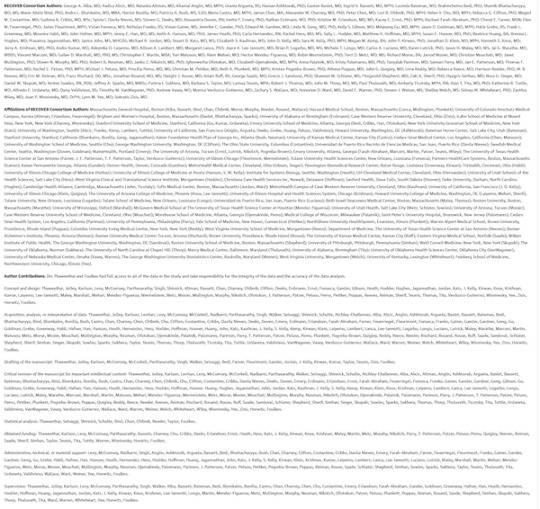
That’s a lot of violin lessons for a lot of little Madisons!
“Definition” falls resoundingly into the research (and not treatment) bucket. In this post, I will first look at the public relations debacle (if debacle it was) that immediately followed its release; then I will look at its problematic methodology, and briefly conclude. (Please note that I feel qualified to speak on public relations and institutional issues; very much less so on research methodology, which actually involves (dread word) statistics. So I hope readers will bear with me and correct where necessary.)
The Public Relations Debacle
Our famously free press instantly framed “Definition” as a checklist of Long Covid (LC) symptoms. Here are the headlines. For the common reader:
12 key symptoms define long Covid, new study shows, bringing treatments closer CNN Long COVID is defined by these 12 symptoms, new study finds CBS Scientists Identify 12 Major Symptoms of Long Covid Smithsonian These 12 symptoms may define long COVID, new study finds PBS News Hour These Are the 12 Major Symptoms of Long COVID Daily Beast
(We will get to the actual so-called “12[2] Symptoms” when we look at methodology.) And for readers in the health industry:
For the first time, researchers identify 12 symptoms of long covid Chief Healthcare Executive 12 symptoms of long COVID, FDA Paxlovid approval & mpox vaccines with Andrea Garcia, JD, MPH AMA Update Finally! These 12 symptoms define long COVID, say researchers ALM Benefits Pro
With these last three, we can easily see the CEO handing a copy of their “12 symptoms” article to a doctor, the doctor double-checking that headline against the AMA Update’s headline, and incorporating the NIH-branded 12-point checklist into their case notes going forward, and the medical coders at the insurance company (I love that word, “benefits”) nodding approvingly. At last, the clinicians have a checklist! They know what to do!
We’ll see why the whole notion of a checklist with twelve items is wrong and off-point for what “Definition” was actually, or at least putatively, trying to do, but for now it’s easy to see why the press went down this path (or over this cliff). Here is the press release from NIH that accompanied “Definition”‘s publication in JAMA:
Researchers examined data from 9,764 adults, including 8,646 who had COVID-19 and 1,118 who did not have COVID-19. They assessed more than 30 symptoms across multiple body areas and organs and applied statistical analyses that identified 12 symptoms that most set apart those with and without long COVID: post-exertional malaise, fatigue, brain fog, dizziness, gastrointestinal symptoms, heart palpitations, issues with sexual desire or capacity, loss of smell or taste, thirst, chronic cough, chest pain, and abnormal movements.
They then established a scoring system based on patient-reported symptoms. By assigning points to each of the 12 symptoms, the team gave each patient a score based on symptom combinations. With these scores in hand, researchers identified a meaningful threshold for identifying participants with long COVID. They also found that certain symptoms occurred together and defined four subgroups or “clusters” with a range of impacts on health
So there are 12 symptoms, right? Just like the headline says? Certainly, that’s what a normal reader would take away. And if a temporally pressed reporter goes to the JAMA original and searches on “12”, they find this:
Using the full cohort, LASSO identified 12 symptoms with corresponding scores ranging from 1 to 8 (Table 2). The optimal PASC score threshold used was 12 or greater
And if the reporter goes further and finds Table 2 (we’ll get there when we look at methodology), they will see, yes, 12 symptoms (in rank order identified by something called LASSO).
So it’s easy to see how the headlines were written as they were written, and how the newsroom wrote the stories as they did. The wee problem: The twelve symptoms are not meant to be used clinically, for diagnosis.[3], Lisa McCorkell was the patient representative[4] for the paper, and has this to say:
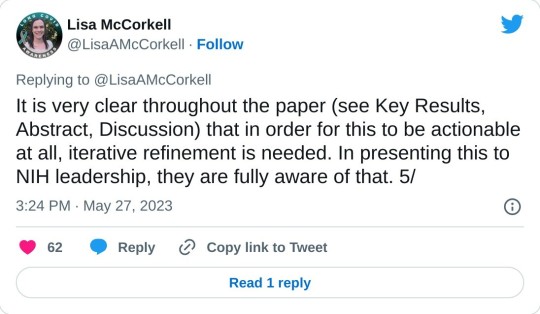
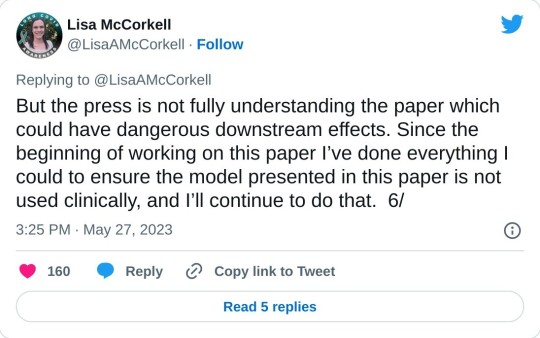
Nevertheless, the “12 symptoms” are out of the barn and in the next county, and as a result, you get search results like this:
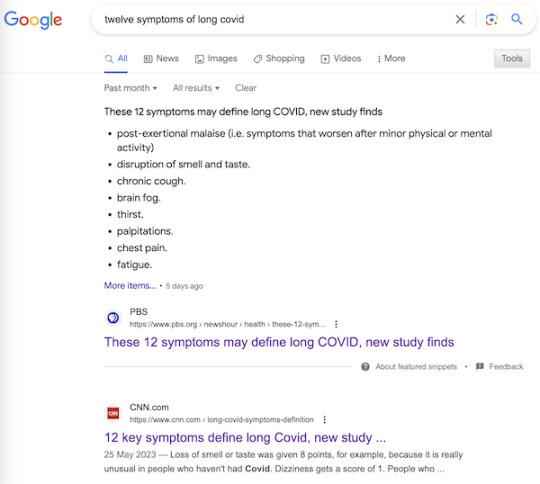
It’s very easy to imagine a harried ER room nurse hearing “12 Symptoms” on the TV news[5], doublechecking with a Google search, and then making clinical decisions based on a checklist not fit for purpose. Or, for that matter, a doctor.
Now, to be fair to the authors, once one grasps the idea that symptoms, even clusters of symptoms, can exist, and still not be suitable for diagnosis by a clinician, the careful language of “Definition” is clear, starting with the title: “Development of a Definition.” And in the Meaning section of the Abstract:
A framework for identifying PASC cases based on symptoms is a first step to defining PASC as a new condition. These findings require iterative refinement that further incorporates clinical features to arrive at actionable definitions of PASC.
Well and good, but do you see “framework” in the headlines? “Iterative”? “First step”? No? Now, I’d like to exonerate the authors of “Definitions” — “They’re just scientists!” — for that debacle, but I cannot, completely. The authors are well-compensated, sophisticated, and aware professionals; PMC, in fact. I cannot believe that the Cochrane “fools gold” antimask study debacle went unobserved at NIH, especially in the press office. How was it possible that “Definitions” was simply… printed as it was, and no strategic consideration given to shaping the likely coverage?[6] One obvious precautionary measure would have been a preprint, but for reasons unknown to me, NIH did not do that. A second obvious precautionary measure would have been to have the patient representative approve the press release. Ditto. Now let us turn to methodology.
The Problematic Methodology
First, I will look at issues with Table 2, which presents the key twelve-point checklist, and names the algorithm (although without explaining it). After that, I will branch out to a few larger issues. Again I issue a caveat that I’m not a Long Covid maven or a statistics maven, and I hope readers will correct and clarify where needed.
Here is Table 2:
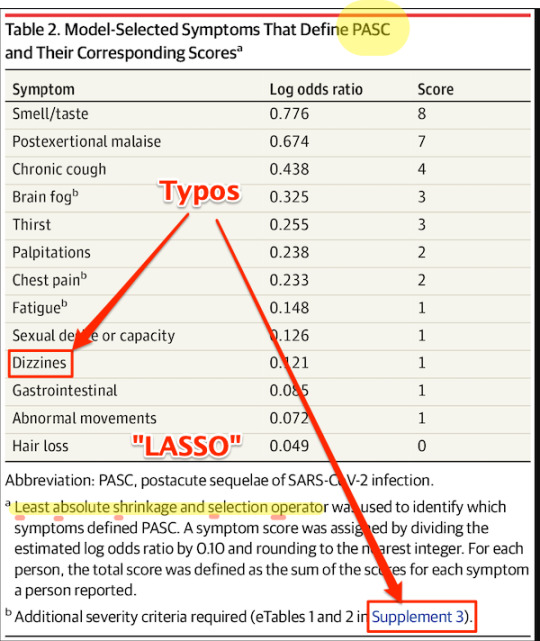
First, some copy editing trifles (highlighted). On “PASC”: As WebMD says: “You might know this as ‘long COVID.’ Experts have coined a new term for it: post-acute sequelae SARS-CoV-2 infection (PASC).” Those lovable scamps, always inventing impenetrable jargon! (Bourdieu would chuckle at this.) On “Dizzines”: Come on. A serious journal doesn’t let a typo like that slip through (maybe they’re accustomed to fixing the preprints?). On “Supplement 3”: The text is highlighted as a link, but clicking it brings up the image, and doesn’t take you to the Supplement. These small errors are important[7], because they indicate that no editor took more than a cursory look at the most important table in the paper. On “LASSO,” hold that thought.
Second, the Covid Action Network points out that some obvious, and serious, symptoms are missing from the list:
[T]he next attempts at diagnostic criteria should take into account existing literature that shows more specifically defined symptoms for Long Covid, from objective findings. (E.g. PoTS, Vestibular issues, migraine, vs more vague symptoms like “headache” or “dizziness.) [The Long Covid Action Project (LCAP)] noticed that while [Post-Extertional Malaise (PEM)] was used as a specific symptom with a high score to produce PASC-positive results, other suites of symptoms, like those in the neurologic category, could have produced an equal or higher score than PEM if questionnaires had not separated neuro-symptoms into multiple subtypes and reduced their total scores. This alone could have created a more scientifically accurate picture of the Long Covid population.
Third, these symptoms — missing, from the patient perspective; to be iterated from the researcher’s perspective, at least one would hope — are the result of “Definition”‘s methodology:
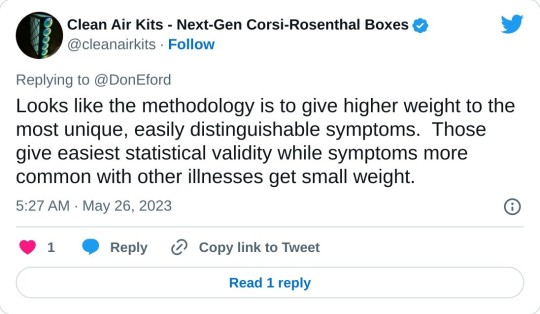
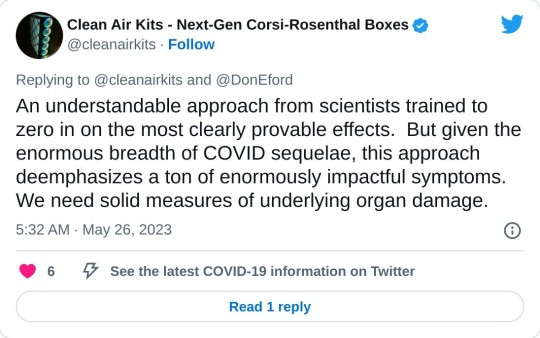
Fourth, I would argue focus on the “most clearly provable effects” — as opposed to organ damage — is a result of the “LASSO” algorithm named in Table 2. I did a good deal of searching on LASSO, and discovered that most of the examples I could find, even the “real world” ones, were examples of how to run LASSO programs, as opposed to selecting the LASSO algorithm as opposed to others. So that was discouraging. I believe — reinforcing the caveats, plural, given above — that I literally searched on “LASSO” “child of five” (“Explain it to me like I’m five”) to finally come up with this:
Lasso Regression is an essential variable selection technique for eliminating unnecessary variables from your model.
This method can be highly advantageous when some variables do not contribute any variance (predictability) to the model. Lasso Regression will automatically set their coefficients to zero in situations like this, excluding them from the analysis. For example, let’s say you have a skiing dataset and are building a model to see how fast someone goes down the mountain. This dataset has a variable referencing the user’s ability to make basketball shots. This obviously does not contribute any variance to the model – Lasso Regression will quickly identify this and eliminate these variables.
Since variables are being eliminated with Lasso Regression, the model becomes more interpretable and less complex.
Even more important than the model’s complexity is the shrinking of the subspace of your dataset. Since we eliminate these variables, our dataset shrinks in size (dimensionality). This is insanely advantageous for most machine learning models and has been shown to increase model accuracy in things like linear regression and least squares.
Since LC is said to have over 200 candidates for symptoms, you can see why a scientist trying to get their arms around the problem would be very happy to shrink those candidates to 12. But is that true to the disease?
Because LASSO (caveats, caveats) has one problem. From the same source:
One crucial aspect to consider is that Lasso Regression does not handle multicollinearity well. Multicollinearity occurs when two or more highly correlated predictor variables make it difficult to determine their individual contributions to the model.
Amplifying:
Lasso can be sensitive to multicollinearity, which is when two or more predictors are highly correlated. In this case, Lasso may select one of the correlated predictors and exclude the other [“set their coefficients to zero”], even if both are important for predicting the target variable.
As Ted Nelson wrote, “Everything is deeply intertwingled” (i.e., multicollinear), and if there’s one thing we know about LC, it’s that it’s a disease of the whole body taken as a system, and not of a single organ:
There are some who seek to downplay Long Covid by saying the list of 200 possible symptoms makes it impossible to accurately diagnose and that it could be encompassing illnesses people might have gone on to develop anyway, but there are sound biological reasons for this condition to affect the body in so many different ways.
Angiotensin-converting enzyme receptor 2 (ACE2) is the socket SARS-CoV-2 plugs into to infect human cells. The virus can use other mechanisms to enter cells=, but ACE2 is the most common method. ACE2 is widely expressed in the human body, with highest levels of expression in small intestine, testis, kidneys, heart, thyroid, and adipose (fat) tissue, but it is found almost everywhere, including the blood, spleen, bone marrow, brain, blood vessels, muscle, lungs, colon, liver, bladder, and adrenal gland
Given how common the ACE2 receptor is, it is unsurprising SARS-CoV-2 can cause a very wide range of symptoms.
In other words, multicollinearity everywhere. Not basketball players vs. skiiers at all.
So is LASSO even the right algorithm to handle entwinglement, like ACE2 receptors in every organ? Are there statistics mavens in the readership who can clarify? With that, I will leave the shaky ground of statistics and Table II, and raise two other issues.
First, it’s clear that the population selected for “Definitions” is unrepresentative of the LC population as a whole:
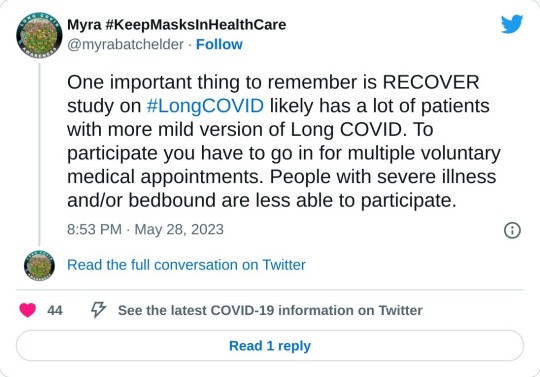
If the patients in “Definition” are not so ill, that might also account for Table 2’s missing symptoms.
Second, “Definition”‘s questionnaires should include measures of severity, and don’t:

Conclusion
The Long Covid Action Project (materials here) is running a letter writing campaign: “Request for NIH to Retract RECOVER Study Regarding 12 Symptom PASC Score For Long Covid.” As of this writing, “only 3,082 more until our goal of 25,600.” You might consider dropping them a line.
Back to the checklist for one moment. One way to look at the checklist is — we’re talking [drumroll] the PMC here — as a set of complex eligibility requirements, whose function is, as usual, gatekeeping and denial:
what they did is create basically a means test to figure out a dx but for smthg that is still not fully understood. it's premature and rly limited, & this will only further aid ppl already dismissive of lc — Wendi Muse (@MuseWendi) June 3, 2023
If you score 12, HappyVille! If you score 11, Pain City! And no consideration given to the actual organ damage in your body. And after the last three years following CDC, I find it really, really difficult to give NIH the benefit of the doubt. If one believed that NIH was acting in bad faith, one would see “Definition” as a way to keep the funding gravy train rolling, and the “12 Symptoms” headlines as having the immediate and happy outcome of denying care to the unfit. Stay safe out there, and let’s save some lives!
NOTES
[1] Oddly, the JAMA paper is not yet listed on RECOVER’s publications page.
[2] “12” is such a clickbait-worthy brainworm. “12 Days of Christmas,” “12 apostles,” “12 steps,” “12 months,” “12 signs of the zodiac,” etc. One might wonder where if the number had been “9” or “14” the uptake would have been so instant.
[3] To be fair to the sources, most of them mention this: Not CBS, Chief Health Care Executive, or the Daily Beast, but CNN in paragraph 51, Smithsonian (9), PBS (20), AMA Update (10), and Benefits Pro (17).
[4] There was only one patient representative for the paper:

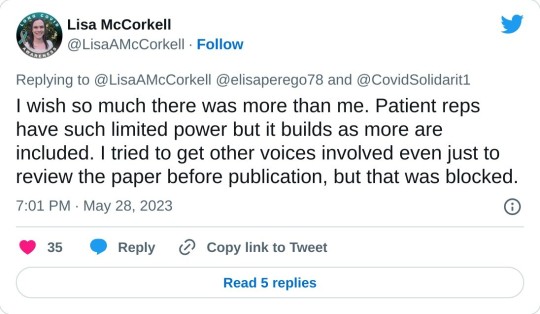
One seems low, especially given the headcount for the project.
[5] I was not able to find a nursing journal that covered the story.
[6] Unless it was, of course.
[7] Samuel Johnson: “When I take up the end of a web, and find it packthread, I do not expect, by looking further, to find embroidery.”
#long covid#naked capitalism#lambert strether#national institutes of health#covid pandemic#covid 19#long covid action project#long covid awareness day
5 notes
·
View notes
Text
ASHINGTON (AP) — President Joe Biden’s White House is giving its support to studying reparations for Black Americans, boosting Democratic lawmakers who are renewing efforts to create a commission on the issue amid the stark racial disparities highlighted by the COVID-19 pandemic.
A House panel heard testimony Wednesday on legislation that would create a commission to examine the history of slavery in the U.S. as well as the discriminatory government policies that affected former slaves and their descendants. The commission would recommend ways to educate the American public of its findings and suggest appropriate remedies, including financial payments from the government to compensate descendants of slaves for years of unpaid labor by their ancestors.
Biden backs the idea of studying the issue, White House press secretary Jen Psaki said Wednesday, though she stopped short of saying he would sign the bill if it clears Congress.
“He certainly would support a study of reparations,” Psaki said at the White House briefing. “He understands we don’t need a study to take action right now on systemic racism, so he wants to take actions within his own government in the meantime.”
Biden captured the Democratic presidential nomination and ultimately the White House with the strong support of Black voters. As he campaigned against the backdrop of the biggest reckoning on racism in a generation in the wake of George Floyd’s killing, Biden backed the idea of studying reparations for the descendants of slaves. But now, as he tries to win congressional support for other agenda items including a massive coronavirus relief package, he faces a choice of how aggressively to push the idea.
Even with Democrats controlling both chambers of Congress and the White House, passing a reparations bill could prove difficult. The proposal has languished in Congress for more than three decades, winning fresh attention in 2019 only after Democrats won control of the House.
Rep. Sheila Jackson Lee, D-Texas, who has 173 co-sponsors for her bill, said the descendants of slaves continue to suffer from the legacy of that brutal system and the enduring racial inequality it spawned, pointing to COVID-19 as an example. Data from the Centers for Disease Control and Prevention indicate that Black people are nearly three times as likely to be hospitalized because of COVID-19 as white people and nearly twice as likely to die from the illness. She offered up her bill as a way to bring the country together.
“The government sanctioned slavery,” Jackson Lee said. “And that is what we need, a reckoning, a healing reparative justice.”
But polling has found long-standing resistance in the U.S. to reparations to descendants of slaves, divided along racial lines. Only 29% of Americans voiced support for paying cash reparations, according to an Associated Press-NORC Center for Public Affairs Research poll taken in the fall of 2019. Most Black Americans favored reparations, 74%, compared with 15% of white Americans.
Rep. Burgess Owens, a first-term Republican from Utah, argued against a reparations commission. He noted that his great-great-grandfather arrived in America in the belly of a slave ship but went on to escape slavery through the Underground Railroad and become a successful entrepreneur. He criticized the “redistribution of wealth” as a failed government policy.
“Though it is impractical and a nonstarter for the United States government to pay reparations, it is also unfair and heartless to give Black Americans the hope that this is a reality,” Owens said.
Jackson Lee’s bill calls for the commission to examine the practice of slavery as well as forms of discrimination that federal and state governments inflicted on former slaves and their descendants. The commission would then recommend ways to educate the American public of its findings and appropriate remedies.
Kamm Howard, the co-chair of the National Coalition of Blacks for Reparations in America, called the commission long overdue and said that “many years have been wasted, many lives lost,” since the legislation was first introduced by Rep. John Conyers, D-Mich., in 1989.
“The goal here is restoration. Where would we as a people be if it were not for 246 years of stolen labor and accompanying horrors, if not for the multiple periods of multibillion-dollar plunder post-enslavement?” Howard said. “We must be made whole.”
Larry Elder, a Black conservative talk radio host, said that African Americans have made tremendous progress economically and socially, noting that Barack Obama was elected twice to the presidency. He claimed that racism has never been less of a significant problem in America than it is now and that reparations would represent one of the greatest transfers of wealth in history. “Figuring out who owes what is going to be a hell of an achievement,” Elder said.
Former NFL star Herschel Walker also spoke in opposition to the commission, saying reparations would create separation and division.
“I feel it continues to let us know we’re still African American rather than just American,” Walker said.
2 notes
·
View notes
Text
Remain Vigilant: Phishing Scams Are On the Rise
Remain Vigilant: Phishing Scams Are On the Rise
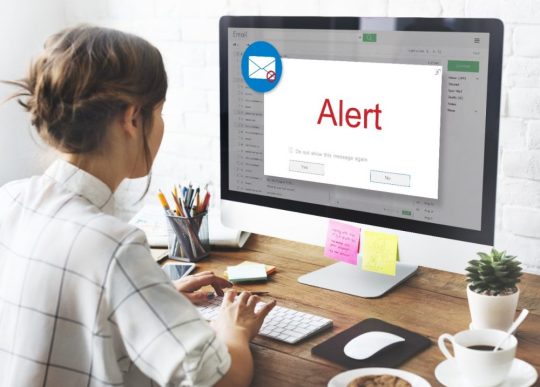
web.com CYBER SECURITY Key Takeaways - Your business needs a strategy in place to protect your organization from phishing. - First, you need to know what these scams look like. The economy has undergone an extreme transformation, and companies in all kinds of fields are looking to update their customers on the availability of their products and services. Unfortunately, scammers have noticed this trend, too, and they’ve been amplifying their phishing efforts in its wake. It’s become such a problem that the US Secret Service issued a warning to corporate America about coronavirus phishing. All business owners should be wary of this type of cybercrime, especially when you consider that cyberattacks cost small business owners an average of $200,000. To protect your business from phishing, you’ll need to have a smart security strategy in place. But before we get to that, let’s quickly define exactly what a phishing email is. What Is Email Phishing? Email phishing is an attempt to steal private information from a person or business that will be used for theft, blackmail or other nefarious purposes. This scam is executed by emailing misleading requests to click website links or email attachments which then install malicious software such as keyloggers or ransomware. These scammers usually disguise themselves by posing as businesses or government agencies that potential victims would typically engage with. For example, during the pandemic, many phishers have been sending emails designed to look like official communications from the Centers for Disease Control (CDC). Phishers may also pretend to be a local business or even an individual you know seeking funds for coronavirus relief. Don't assume that an email is secure just because the name of a person or business you recognize appears as the sender's name or in the subject line. How to Identify Email Phishing Protecting your business from phishing emails is a two-part strategy. The first part is to make sure that you and the other people in your company know how to identify email phishing. The second is having a cybersecurity solution in place that monitors the security of all of your business-related computers and mobile devices. Let's start with a few simple tips.

web.com CYBER SECURITY Be Wary of Email Addresses and Domain Names You Don’t Recognize Say you receive an email that looks completely legitimate from an entity you normally interact with, but if you’ve never seen the email address before, or the domain name in the email address isn’t the same as the organization’s website. If that's the case, then there's a good chance that it’s a phishing email. Additionally, most businesses will not use an email address from a free email provider such as @gmail.com or @yahoo.com. Emails sent from these addresses that purport to be from businesses or government agencies should immediately arouse suspicion. It’s worth noting here that email addresses with domain names that end in “.gov” are probably legitimate. That’s because .gov domain names are carefully regulated and only given to government bodies. So unless they’ve been hacked, which is very unlikely, they should be safe. Poor Spelling and Grammar Can Be Tell-Tale Signs of Phishing Here’s a truth that applies to virtually everyone: most of the world does not speak the same language as you. Many or most of the scammers who send you phishing emails won’t speak the same language as you, either. To overcome this barrier, they’ll translate their phishing email into your language using translation software. Fortunately, these translation methods are often imperfect, so the phishing messages you get will commonly have spelling and grammatical errors, which can make them easier to identify, Suspicious Links and Attachments Should Be Scrutinized When it comes to phishing emails, it’s worth reinforcing that the link or attachment is what the scammer wants you to click on. Scammers will try to hide the link they want you to click on by embedding it in an image that says something like, “Click Here to Get Coronavirus Relief!” As mentioned before, the US Secret Service warned of scammers sending Microsoft Office files with malicious software attached to them. As a general rule, you should avoid clicking any link or attachment from anyone unless it’s something you’re expecting. If you’ve applied all three of these tactics and are still unsure if an email from an organization is phishing or not, contact the company directly by phone or email to verify. Just don’t use the contact information that was provided in the email in question. Preventing Cybercrime Is Everyone’s Responsibility Odds are you will receive coronavirus phishing emails. It’s up to you and your team members to follow best practices for cybersecurity. Still, there's only so much your team can do. That’s why it’s so important to have firewalls and other forms of security in place, such as Web.com's Cyber Security Solution. This tool actively monitors the security on your mobile devices and work computers and also provides access to a team of experts who can help resolve cybersecurity issues. Ask yourself how you feel about your business’s cybersecurity strategy. Do you have a strong one in place? If not, encourage your team to be open about the subject, make sure they know how to spot phishing and give all of your devices an added layer of security with a proper security solution. By following our tips, you'll protect yourself and your business during the coronavirus crisis and beyond. CYBER SECURITY, GET SECURED Read the full article
#BuildingaWebsite#CaseStudy#ecommerce#Homepage#Marketing#Security#SEO#Tips#Web.comTeam#WebsiteDesign
2 notes
·
View notes
Text
Vitalik Buterin, Ethereum’s Co-founder, Shifts $8M Worth of ETH to Fresh Wallet
Key Points
Vitalik Buterin, co-founder of Ethereum, has transferred $8 million worth of ETH to a new wallet.
The transfer has sparked speculation that it could be a potential donation to a charitable organization.
Vitalik Buterin, the co-founder of Ethereum, has recently moved $8 million in ETH to a new wallet address.
This activity has led to speculation that the funds may be a donation to a charity.
Historical Donations and Speculations
Buterin has a history of transferring significant amounts of Ethereum to various wallets.
Many of these transfers have been identified as donations to charities and other worthy causes.
The latest transfer of 3,000 ETH, worth roughly $8 million, has led Lookonchain to speculate that it could be a potential donation.
The digital assets were sent to a multi-signature safe wallet, which Lookonchain suggests may belong to an unidentified charity.
In addition to the 3,000 Ether, a blockchain security firm, PeckShield, detected a transfer of 200 ETH worth $534,000 to an address labeled 0xEBb7…eB89.
While it remains unclear if these funds are intended for charity, Buterin began making substantial donations to charities in May 2021.
Philanthropic Efforts
At that time, he donated over $1 billion in various cryptocurrencies to an Indian Covid-Crypto Relief Fund, established to assist those affected by the pandemic.
This initiative was founded by Polygon co-founder Sandeep Nailwal, who initially funded it with $1 million.
In 2023, Buterin continued his philanthropic efforts with another donation to fund research projects related to the virus.
He contributed an additional $10 million to a program that allocated $100 million for research.
The funds are intended to be used for research to improve indoor air quality to prevent the spread of coronavirus and to investigate ways to mitigate the virus’s long-term effects.
Buterin has also made significant contributions to open-source projects.
In May 2021, Gitcoin, an open-source bug bounty platform, announced that it had received a “generous gift” from Buterin worth approximately $5 million.
He sent 49 trillion Akita Inu tokens (AKITA) to the platform’s wallet address.
Additionally, Buterin donated $441 million worth of the same token to Gitcoin to support its mission of improving security within the crypto industry.
Last month, Buterin donated 100 ETH to the 2077 Collective Community, an initiative designed to promote the Ethereum blockchain and strengthen its industry position.
This group, composed of creatives, researchers, developers, and marketers, plans to launch innovative projects to “make Ethereum cool again”.
According to data from The Giving Block, crypto donations reached a record high in 2022, with $125 million donated to various charities.
As a result, the company predicts that crypto donations could surpass $10 billion over the next decade.
0 notes
Text
Week 12
Crowd Sourcing in Times of Crisis
Crowdsourcing is a powerful tool to gather real-time information, ideas or services from a large group of people, especially from an online community. It is a decentralised network that grasps the collective intelligence and efforts of the public to address challenges that arise during emergencies such as natural disasters, pandemics, or political issues. For example, the Ushahidi Haiti Project collected approximately 40,000 independent reports, and within a few hours, nearly 4,000 unique events were mapped (Yang et al., 2014). This has shown crowdsourcing plays a crucial role in real-time gathering information and enabling people to share and update information simultaneously.
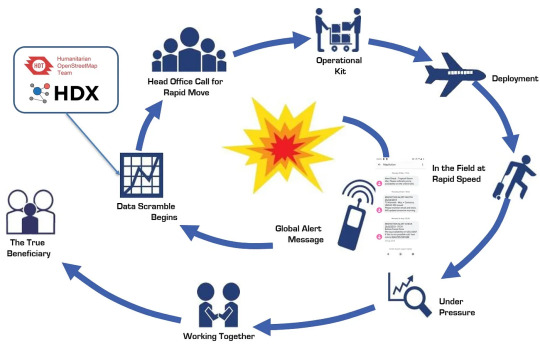
MapAction rapid response process.
Certainly, crowdsourcing is being utilised to help mobilise resources such as food, medical supplies, and volunteers. It allows diverse communities to collaborate and improve communication through online platforms. TopCoder, an online platform offering crowd-contest services, launched the Anti-Coronavirus Hackathon, an ideation challenge aimed at generating ideas from its community to assist people, governments, and organisations during the coronavirus outbreak (Vermicelli et al., 2020). Engaging the community in crisis response efforts fosters a sense of ownership and empowerment. Additionally, crowdsourcing encourages society to take the initiative to be involved in disaster response and recovery. For instance, the "Humanitarian OpenStreetMap Team" entitles volunteers to create and update maps in areas affected by disasters, providing critical information for responders.

The accuracy of data, users’ privacy, and the digital divide have become the concerns of society. There is controversy about the compromise between the speed of information gathering and the accuracy of data. In crises, quick decisions are often necessary, but relying on unsubstantiated crowdsourced data can lead to misinformation and ineffective responses. In order to ensure the reliability of crowdsourced information, verification mechanisms and partnerships with trusted entities can help alleviate the risk of misinformation. Crowdsourcing in times of crisis offers multiple advantages, from rapid data collection to diverse problem-solving. However, it also presents challenges that integrate with data quality, privacy, and coordination. As technology evolves gradually, the rapid expansion of crowdsourcing makes it essential to confront these obstacles and leverage the collective strengths of the crowd in a responsible and ethical manner.
References:
Penson, S. (2021, December 13). Mapping for Humanitarian Response 2019 MapAction and Humanitarian OpenStreetMap Team. Medium. https://medium.com/@steve.penson/mapping-for-humanitarian-response-2019
Vermicelli, S., Cricelli, L., & Grimaldi, M. (2020). How can crowdsourcing help tackle The COVID‐19 pandemic? An explorative overview of innovative collaborative practices. R & D Management, 51(2), 183–194. https://doi.org/10.1111/radm.12443
Yang, D., Zhang, D., Frank, K., Robertson, P., Jennings, E., Roddy, M., & Lichtenstern, M. (2014). Providing real-time assistance in disaster relief by leveraging crowdsourcing power.Personal and Ubiquitous Computing, 18(8), 20252034. https://doi.org/10.1007/s00779-014 0758-3
0 notes
Text
Anthony's Stupid Daily Blog (742): Fri 29th Mar 2024
On the way to work this morning the fucking gears on my bike got stuck and would only move between second and third gear and wouldn't let me go down to first. I still got to work fine but I realised this meant that I was going to have to call someone out to fix this plus get the sprockets changed and then take it to BDS to get its service. After taking a minute to reflect on how much financial strain this bike has put on me plus the fact that every time I set out to work I'm paranoid that something bad is going to happen I decided…fuck this piece of shit. This is the sixth or seventh time that something has fucked up with this thing and I haven't even had it three years yet. It's just not worth it. To be fair to the people who sold this useless hunk of junk to me most people who get a 125 do so to practice on it so that they can pass the actual test and progress on to getting an actual bike that isn't made in China out of old chopsticks and held together with glue made from frog saliva. There's still such a backlog of people waiting to book lessons and tests due to the coronavirus however that I've been unable to make steps to progress to a proper bike and I've been stuck with this turd on wheels. The plan was to renegotiate the insurance on the bike and if I could get it low enough I would keep it in the garage and use it when the sun was out but use the car for rainy days. However this new shitty development has changed all that and now I'm just going to cancel the insurance flat out. I rang up Dad and asked if I could come to his on Monday so that I could cancel the insurance. I told him I would ask around to see if any of my friends had a pedal bike I could use for work but he told me that he had one I could use. Although it was half nine at night I asked if I could come over to his to pick it up and he said yes. Luckily the buses were still running (of course they were still running, UK buses are not made in China) and so I got over there fairly quickly. He got this bike during the pandemic but could never be arsed to use it. it's an electric bike so I can even use it to get up hills with minimal effort too. I pedalled home happy that thanks to me good old Dad I'd managed to make the best out of a bad situation and without the motorbike I can hopefully save a bit of money between now and getting a car.
Dear all motorbike dealers in the UK: STOP IMPORTING CHINESE MOTORBIKES. It's the only way Chinese bike manufacturers will be encouraged to start making better, more reliable bikes
^ Now that Lenny Henry's not doing Comic Relief anymore I feel like I might be able to get him to be the face of this campaign
0 notes
Text
Navigating Global Supply Chain Disruptions: Strategies for Resilience in Uncertain Times

Introduction:
In an undeniably interconnected worldwide economy, supply chains act as the foundation of organizations, working with the progression of labor and products across borders. Notwithstanding, the Coronavirus pandemic and other unanticipated interruptions have highlighted the weakness of supply chains to outer shocks. In such unsure times, organizations should adjust and advance to explore through disturbances and fabricate flexibility in their store network activities. ISBF New Delhi, One of the pg diploma in finance from in india, this article investigates successful methodologies for exploring worldwide production network disturbances and guaranteeing versatility in violent times.
Understanding Supply Chain Disruptions:
Production network interruptions can emerge from different variables, including catastrophic events, international strains, financial slumps, and pandemics. These interruptions can disturb the progression of materials, postpone creation plans, inflate expenses, and effect consumer loyalty. The Coronavirus pandemic, specifically, has featured the interconnectedness of worldwide stockpile chains and the requirement for proactive gamble the executives procedures.
Strategies for Resilience:
Expansion of Providers: Organizations ought to lessen reliance on a solitary cause of supply by expanding their provider base. Working together with numerous providers across various districts or nations can alleviate the gamble of disturbances in a single area. Financial matters universities in India stress the significance of key obtaining choices and store network adaptability to adjust to changing economic situations.
Production network Planning and Perceivability: Accomplishing perceivability across the whole store network is fundamental for recognizing weaknesses and proactively overseeing gambles. Using cutting edge innovations, for example, blockchain, IoT, and information examination can give continuous experiences into production network activities. By planning the start to finish inventory network, organizations can recognize basic hubs and foster emergency courses of action to relieve interruptions.
Stock Streamlining: Keeping up with abundance stock may not generally be plausible because of cost contemplations. Notwithstanding, organizations can embrace stock streamlining strategies to work out some kind of harmony between stock levels and administration levels. In the nick of time stock administration, request determining, and wellbeing stock arranging can assist cradle against supply with binding disturbances while limiting conveying costs.
Cooperation and Associations: Joint effort among store network accomplices is significant for building flexibility. Laying areas of strength for out with providers, clients, operations suppliers, and different partners encourages trust and empowers quick reaction during disturbances. Financial matters universities in India underscore the significance of cultivating a cooperative environment to share data, assets, and best practices.
Light-footed and Versatile Tasks: Adaptability is vital to exploring through inventory network disturbances. Organizations ought to take on lithe and versatile activities techniques that consider speedy direction and reaction to changing business sector elements. This might include upgrading processes, executing measured creation frameworks, and putting resources into broadly educating representatives to play out various jobs.
Situation Arranging and Chance Appraisal: Leading situation arranging activities and gamble with evaluations can assist organizations with expecting possible interruptions and foster proactive relief procedures. By mimicking different situations and assessing their effect on inventory network activities, organizations can distinguish basic weaknesses and focus on risk relief endeavors. Financial aspects schools in India offer particular courses in risk the board and choice sciences to furnish understudies with the abilities expected to break down complex store network difficulties.
Case Studies and Best Practices:
This segment can incorporate certifiable instances of organizations that have effectively explored store network interruptions, alongside illustrations learned and best practices. Contextual analyses from ventures, for example, car, hardware, drugs, and retail can give significant bits of knowledge into successful flexibility procedures and creative ways to deal with production network the board.
Challenges and Opportunities in the Digital Age:
The computerized change of inventory network the executives presents the two difficulties and open doors for organizations. While advanced innovations offer exceptional degrees of perceivability, productivity, and network, they likewise present new dangers, for example, online protection dangers and information breaks. In this way, organizations should put resources into vigorous online protection gauges and guarantee the respectability and security of their advanced store network foundation.
In addition, arising advancements like computerized reasoning (simulated intelligence), AI, and mechanical technology are altering store network activities. These advances empower prescient investigation, independent direction, and mechanization of dull undertakings, accordingly improving proficiency and diminishing human mistake. By utilizing these advances, organizations can smooth out processes, upgrade asset portion, and answer all the more successfully to disturbances.
Environmental and Social Responsibility:
Notwithstanding monetary contemplations, organizations should likewise focus on ecological and social obligation in their store network rehearses. Feasible obtaining, moral work rehearses, and ecological stewardship are progressively significant elements for buyers, financial backers, and controllers the same. Financial matters universities in India accentuate the significance of integrating supportability standards into production network the executives systems.
Organizations that show a guarantee to ecological supportability and social obligation upgrade their image notoriety as well as moderate dangers related with administrative consistence and partner examination. By embracing economical acquisition works on, decreasing fossil fuel byproducts, and advancing fair work principles, organizations can make shared incentive for society while protecting their drawn out reasonability.
Conclusion:
All in all, building versatility in worldwide stockpile chains is basic for organizations to flourish in an undeniably unpredictable and questionable climate. By taking on proactive gamble the board procedures, utilizing innovation, cultivating joint effort, and embracing deftness, organizations can relieve the effect of interruptions and guarantee congruity of activities. ISBF New Delhi, best colleges for economics hons in india, organizations can acquire important experiences and aptitude to explore through worldwide store network disturbances and arise more grounded despite difficulty.
0 notes
Text
Maryland Man Jailed in COVID-19 Fraud
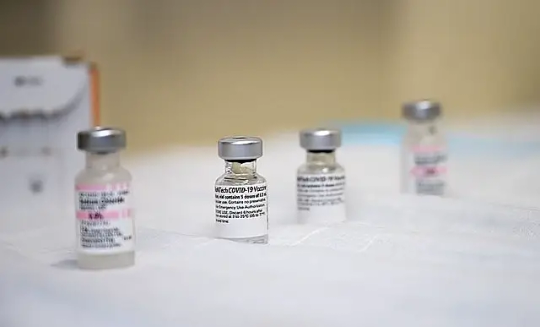
A Collaborative Effort Against Economic Crime
In a remarkable display of investigative collaboration, the HSI Baltimore field office, alongside several other law enforcement agencies, successfully brought to justice a Maryland man for his role in a substantial COVID-19 fraud scheme. Dementrous Von Smith, a 36-year-old from Waldorf, Maryland, faced a hefty sentence of 53 months in federal prison following his involvement in an elaborate conspiracy that exploited the CARES Act unemployment insurance program, resulting in losses of over $1.5 million. The CARES Act: A Beacon of Hope Exploited The Coronavirus Aid, Relief, and Economic Security (CARES) Act, passed in March 2020, was a federal initiative designed to provide critical financial support to Americans impacted by the COVID-19 pandemic's economic fallout. Unfortunately, this well-intentioned program became a target for fraudsters like Smith, who saw an opportunity for personal gain amidst a global crisis.
The Scheme: A Web of Deceit
From March 2020 to October 2021, Smith and his associates engaged in a sophisticated fraud operation. They impersonated victims to file fraudulent unemployment insurance claims across Maryland, California, and Arizona. Utilizing electronic communication, they traded the personal information of unsuspecting victims, crafting false email addresses and phone numbers to bolster their fraudulent applications. Cashing In: The Unlawful Gain The group skillfully converted the fraudulent benefits into cash, using debit cards for withdrawals and various financial transactions. One notable incident involved Smith withdrawing $4,000 using a victim's UI profile. Further investigation revealed numerous instances where Smith personally manipulated victim profiles for monetary gain. The Raid: A Turning Point On July 7, 2022, a critical operation led to the search and subsequent seizure of evidence from Smith's residence and vehicle. This operation not only unearthed a significant amount of cash but also revealed an alarming cache of firearms and ammunition, highlighting the severity of Smith's criminal endeavors. A Co-Conspirator's Fate Michael Akame Ngwese Ay Makoge, a co-defendant in the scheme, also faces severe legal consequences. Pleading guilty, Makoge is set to receive his sentence in early 2024, which could amount to a substantial period in federal prison.
The Bigger Picture: A United Front Against Pandemic Fraud
This case is part of a broader effort by the District of Maryland Strike Force to combat pandemic-related fraud. These strike forces, established across the United States, play a pivotal role in addressing large-scale, multi-state frauds, particularly those involving pandemic relief funds. Their success in this case underscores the importance and effectiveness of interagency cooperation in tackling complex financial crimes. HSI's Role in Upholding Justice HSI, the principal investigative arm of the U.S. Department of Homeland Security, was instrumental in this operation. With a vast network of agents and international presence, HSI continues to be a key player in combating transnational crime and threats, exemplifying the power of collaboration in upholding justice. Sources: THX News & US Immigration and Customs Enforcement. Read the full article
#CARESActunemploymentinsurance#COVID-19fraudscheme#economicdeclinerelief#federalprisonsentence#fraudulentunemploymentclaims#HSIBaltimoreinvestigation#identitytheftvictims#lawenforcementcollaboration#pandemicrelieffunds#transnationalcrimeinvestigation
0 notes
Text
STAR HIE Program Helps Unlock Powerful Public Health Data in West Virginia
ONC launched the Strengthening the Technical Advancement and Readiness of Public Health Agencies via Health Information Exchange (STAR HIE) Program in 2020 using funding from the Coronavirus Aid, Relief, and Economic Security Act (CARES Act). The program was expanded in 2021 to increase support for efforts to improve vaccination data sharing between jurisdictional Immunization Information Systems…

View On WordPress
0 notes
Text
Dominion Energy quadruples renewable energy and storage in move towards its clean energy goals
The world is facing a pandemic that is getting worse and is unlike anything we have ever seen before. The Coronavirus pandemic has attacked all nations of the world and sets out monetary stagnation among a few nations. Market volatility has reached new heights as a result of the coronavirus outbreak that has spread across the United States and Europe. The pandemic's current downturn is extremely challenging for the energy industry, affecting electric utilities worldwide. Electric utilities must keep the lights on during the lockdown because people now telecommute from home, hold meetings online, and rely on data and electricity for other tasks, making electricity more important than ever.

Territory Energy
Territory Energy Inc (Domain) is a coordinated energy utility, which offers power, flammable gas and related administrations. It produces, communicates and conveys power; distributes, stores, processes, and transmits gas; and is in charge of LNG import and storage. In 18 states in the eastern and Rocky Mountain regions of the United States, the company serves approximately seven million customers. Five divisions comprise Dominion's business operations: Contracted Generation, Dominion Energy South Carolina, Gas Distribution, Gas Transmission & Storage, and Virginia Dominion Energy Its corporate, service company, and other functions are all included in its Corporate and Other segment. The organization centers around developing and growing electric age and petroleum gas transmission and storage spaces; improving and growing electric transmission and appropriation resources; acquiring nuclear energy; and the upkeep of the Atlantic Coast Pipeline.
Coronavirus influence
Territory is working vigorously with security as its guiding principle to defend the prosperity of its clients during the pandemic. The company has business continuity plans in place and is taking a number of steps to ensure that its customers receive dependable energy service round-the-clock and to keep its employees safe and healthy. In acknowledgment of Domain Energy's solid history for wellbeing, seven of the organization's gas organizations as of late gotten the American Gas Affiliation's most noteworthy honors for security execution: Dominion Energy Ohio, Dominion Energy Questar Pipeline, Dominion Energy South Carolina, Dominion Energy Transmission Inc., Dominion Energy Utah-Wyoming-Idaho, and Dominion Energy West Virginia are all examples of Dominion Energy.
Dominion announced that all nonpayment-related service disconnections had been suspended. Additionally, it has announced that the Dominion Energy Charitable Foundation will contribute $1 million to Covid-19 relief efforts in the United States. In order to assist the communities that are home to the more than seven million customers that Dominion Energy serves, the company has pledged $250,000 to the American Red Cross and $750,000 to nonprofit organizations.
Dominion reported a Q1 2020 net loss of $270 million, or $0.34 per share, compared to a Q1 2019 net loss of $680 million, or $0.86 per share. Operating earnings for the quarter were $931 million, or $1.09 per share, compared to operating earnings of $873 million, or $1.10 per share, for the same period in 2019. Due to milder than usual weather in its utility service territories, the company estimates that its operating earnings for the first quarter of 2020 were down $0.09 per share. Dominion anticipates operating earnings of $0.75 to $0.85 per share in the second quarter of 2020, compared to operating earnings of $0.77 per share in the second quarter of 2019. The business maintains its operating earnings range of $4.25 to $4.60 per share for 2020.
In the meantime, on May 1, Dominion asked for proposals for up to 250MW of energy storage and up to 1GW of solar and onshore wind generation in the United States. Following the passage of the Virginia Clean Economy Act by the state's General Assembly and state governor Ralph Northam's executive order on climate change, the utility in Virginia increased its use of solar and wind power by four times in its 15-year long-term integrated resource plan (IRP). By 2035, Dominion Energy projects 5.1 gigawatts of offshore wind, 15.9 gigawatts of solar, and 2.7 gigawatts of energy storage. Over the next 15 years, offshore wind, solar, and energy storage development is expected to grow to approximately 24 GW of new renewable energy and storage capacity.
Territory is making fundamental moves up to the transmission framework in Virginia and is leaving on essential ventures on the conveyance framework through its Matrix Change Plan. The organization said that it is zeroing in on the wellbeing and security of its clients and workers and considering these tasks to be an impetus to restarting the economy when fitting. By 2050, the company intends to eliminate all carbon dioxide and methane emissions from its gas infrastructure and power generation operations.
0 notes
Text
"Ads with Empathy and Positive Messages: "United for America" by Unilever and "Creativity Goes On" by Apple During the Pandemic"
Both the "United for America" commercial by Unilever and the "Creativity Goes On" commercial by Apple were broadcast during the COVID-19 pandemic. The former sends a message of support and unity to the American people, while the latter encourages people to keep being creative despite difficulties.
Unilever's "United for America" campaign targets pandemic-affected Americans. Apple's "Creativity Goes On" ad targets Apple customers and creative professionals looking for inspiration or encouragement amid the pandemic.
Unilever's "United for America" ad mentions its brands and pandemic relief efforts without directly advertising any items. Because they attempt to improve society rather than sell a product, the goods being advertised cannot be judged "excellent" or "inferior" for the audience. Apple's "Creativity Goes On" ad doesn't promote products either. It encourages innovation even in difficult circumstances, which may benefit its target population.
Neither advertisement engages in any type of manipulation of the media. Both commercials are effective because they convey simple, touching themes that reach people when they're at their lowest. While Apple's ad encourages originality and creativity, Unilever's emphasizes unity and support. Both spots aim for an emotional response rather than direct promotion.
During the pandemic, many companies have focused their advertising on empathy, social responsibility, and positivity, according to Forbes. "Advertising that inspires, supports, and encourages us will remain critical in helping consumers get through this period" (Cuneo, 2020). This tendency is shown in Unilever's "United for America" and Apple's "Creativity Goes On" advertising, which use emotional appeals to connect with viewers and offer support through tough times.
Cuneo, A. (2020, April 29). The Role of Advertising During the Coronavirus Pandemic. Forbes. Retrieved from https://www.forbes.com/sites/andrewcuneo/2020/04/29/the-role-of-advertising-during-the-coronavirus-pandemic/?sh=632c903165a5
UNILEVER – UNITED FOR AMERICA. (2020, May 14). YouTube. https://www.youtube.com/watch?v=ZocGJBDsTtQ
Apple - Creativity goes on ft. John Kransinski, Lily James, Oprah Winfrey. (2020, April 15). YouTube. https://www.youtube.com/watch?v=5Q2yLC0WOcs
1 note
·
View note
Text
COVID's Impact on the Economy
The coronavirus disease (COVID) epidemic has caused chaos in people's lives and overloaded the healthcare system. Moreover, it has left firms and national economies calculating the cost of these interruptions. The U.S. economy has failed to recover since COVID started to spread in March 2020. While swift federal government action helped firms and individuals get through the initial wave of cases, a brief breach in fiscal policy has put the recovery's early stages in jeopardy.
According to economists, the U.S. economy is now more susceptible to long-term economic sluggishness due to a rising pool of job searchers in the midst of a labor shortage. David Cutler, a Harvard University economist, calculated that the cost of COVID-19 might be as high as $3.7 trillion. He calculated that to be around 1% of the nation's total economic output.
However, the true figure is significantly higher due to "post-COVID disorders," or persistent health issues brought on by the virus that persists for at least four weeks after symptoms first appear. Common side effects include difficulty breathing, chest discomfort, and confusion.
Patients' lives and enterprises may be negatively impacted by these long-term implications. These may also make it more difficult for someone with COVID-19 to get employment, particularly if they are already having financial difficulties. While some people can continue working owing to minor symptoms, workplace adjustments, or pressing financial needs, others can find it difficult to find employment again. Being unable to work full-time is a crippling experience for many people.
The COVID-19 pandemic's effects on small enterprises are a complicated matter that involves numerous important variables. This study examines how small companies experienced the COVID-19 crisis, their predictions for its longer-term effects, and their impressions of government relief efforts using a sample of more than 5,800 small enterprises.
Companies like Google and Facebook reported a year-over-year revenue increase in the first quarter of 2020, largely equal to or exceeding the prior quarter. But, officials from those businesses said that the COVID-19 epidemic had caused sudden drops in ad income in March.
Executives at carriers like AT and Verizon have also acknowledged that, mostly as a result of decreased advertising-income, their service revenue growth has been slightly slower than it had previously been. Moreover, broadband internet service providers like Comcast and Charter reported a 9.5% growth in first-quarter internet revenue.
These are all indications that COVID-19's economic impact is less severe than some may believe. Many people continue to worry that the virus may mess with global supply chains and demand. Business investment may therefore slow down, which would be bad for the economy. In particular, in hard-hit areas, this may have an effect on home markets.
The White House has released a set of directives for nations globally that attempt to support economies and other crucial systems under stress because of the sickness in order to guard against the detrimental economic effects of COVID-19. Programs to improve financial stability by limiting and repricing lending are among them.
To further understand how the virus affects the economy as the epidemic spreads, an additional study must be undertaken. It may be not easy to evaluate these consequences. In the long run, COVID-19's total economic impact may be lessened if politicians can keep an eye on them and take action.
An economic crisis brought on by the epidemic resulted in slower growth and higher inflation rates. Because of this, the economy was in worse health than it had been since the Great Depression, and unemployment was getting close to record levels. Many employees were furloughed and laid off as a result of the COVID-19 outbreak forcing firms to close. As a result, there was a sharp decline in both consumer spending and demand for goods and services.
In addition, the shutdown of manufacturing and facilities affected supply networks. The virus has caused significant disruptions in China that have impacted the flow of commodities coming from other nations. This would make it more challenging for American businesses to import products from China, which will hinder job growth and economic expansion. As a result of COVID-19, it may possibly result in wider supply chain disruptions throughout the world.
As COVID-19 will have an impact on the economy, authorities must take action to limit disruptions to their workers, companies, and sectors. This calls for an immediate, effective reaction that reduces the dangers of the epidemic without impeding the effort necessary to contain the virus.
0 notes
Text
The old idea that autocracies are better than raucous democracies at getting things done found new life during the coronavirus pandemic. Many Western commentators argued that while democracies dithered and debated, autocracies were quick to respond and mobilize their resources. Sometimes that might be true—but only if you are the right kind of autocracy. President Recep Tayyip Erdogan’s Turkey, it turned out, is not one of them.
Erdogan’s response to the country’s devastating earthquake on Feb. 6 was painfully slow and uncoordinated. But regimes in which power is centralized are supposed to be fast and organized. All Erdogan had to do was pick up the phone and order his commanders to dispatch NATO’s second-largest army to the badly hit cities, mobilize the bureaucracy to send much-needed aid, and deploy emergency response teams. He did not. Just minutes after the 7.8 magnitude earthquake hit 10 Turkish provinces, troops stood ready to step in and take part in search and rescue operations. Yet in the critical early hours, the order from the top never came. Nor did Turkey’s Disaster and Emergency Management Presidency (AFAD) rush to help the victims. Why?
In a brilliant book, Timothy Frye tells us that strongmen are not as strong as we all think. Being an autocrat is no easy feat. Autocratic leaders, particularly in personalist autocracies such as Turkey’s, face trade-offs. They mobilize support by promising to get things done, but the things they must do to build their one-person rule end up undermining their capacity to deliver on that promise. One of the first things strongmen do when they centralize power is weaken institutions. But weak institutions make it difficult for them to govern, which eventually undermines their strongman rule.
Erdogan, in his 20 years at the helm, has hollowed out the country’s institutions and placed incompetent loyalists in key positions to centralize power in his own hands. This made Erdogan the strongest man in the country but left the state barely functioning. One of the most striking examples of institutional erosion is Erdogan’s suppression of the Turkish military, which went far beyond the legitimate aim of limiting the generals’ role in politics.
Disaster relief is an important part of most modern armies’ work. They can act quickly and provide medical and logistical support after natural disasters. As part of his efforts to curb the generals’ power, Erdogan stripped the military of its capacity to respond unprompted to domestic disasters such as earthquakes, establishing AFAD to take on that role instead.
The organization, like every other state agency in Turkey, quickly became a tool for Erdogan to boost his support at home and abroad. He stuffed AFAD with incompetent loyalists and made it part of a network of faith-based aid organizations to push the narrative that Erdogan was the “protector of Muslims” around the world. Advertisements showing AFAD providing aid to Muslims in need appear all over pro-government television channels and newspapers, and they are displayed at events in municipalities controlled by Erdogan’s Justice and Development Party.
In reality, however, AFAD lacks the resources, experience, and human capital to carry out the mission it was set up to perform. The person in charge of its disaster response department is a theology graduate with no experience in disaster relief who previously served in Turkey’s Directorate of Religious Affairs. Despite AFAD’s well-known shortcomings—it operates on a small budget and has a staff of just over 7,000 people—the organization was put in charge after the earthquake. All rescue efforts and humanitarian aid had to go through it, and no other state agency, international aid group, or nongovernmental organization could lift a finger without AFAD’s permission. Even Turkish Defense Minister Hulusi Akar, criticized for not deploying troops to the earthquake-affected areas fast enough, hinted that his troops stood ready to help but never got the order. Tens of thousands of victims died because Erdogan and those in his inner circle did not want anyone, particularly the military, to outshine the agency he had created.
The man who came to power promising to get things done could not deliver on that promise in Turkey’s darkest hour because his one-man rule incapacitated the country’s institutions and eroded the foundations of governance.
The earthquake did not just shed light on how Erdogan has damaged the state’s capacity in the two decades he has been in power; it also revealed where his priorities lie. Like all autocrats, Erdogan faced a trade-off between enriching his family and inner circle and serving the people. It is a difficult balance to strike. If an autocrat chooses to please his cronies at the expense of the people, he might face popular protest. If he decides to serve the public by redirecting government spending at his cronies’ expense, he might be challenged by the small circle around him.
In the last decade, Erdogan consistently chose the former over the latter. His controversial and unorthodox monetary policy to cut interest rates despite spiraling inflation made his already-rich cronies even richer, while runaway food prices and skyrocketing rents squeezed those at the bottom. Poverty soared as millions of Turks were unable to meet their basic needs. While granting infrastructure and building contracts to cronies who cut corners on safety earned Erdogan’s inner circle billions of dollars, the shoddy residences they built turned into graves for tens of thousands of people.
Erdogan may finally pay a price for all of that. Turkey’s presidential and parliamentary elections are likely to be held in June. No matter how hard Erdogan-controlled media try to spin things, the sheer scale of the devastation makes it impossible for Erdogan to hide his government’s incompetent response. That will dim his prospects. Pushing the elections back to a later date will not solve his problems, either. The earthquake has compounded Turkey’s existing economic, social, and political woes, leaving the country and Erdogan’s prospects in a worse place.
Erdogan’s Turkey is a powerful reminder that strongmen do not bring stability and do not get things done. They are at their worst when their country needs them the most. The tragedy that struck two weeks ago reminds us that Turkey does not need a strongman; it needs strong, capable institutions.
0 notes